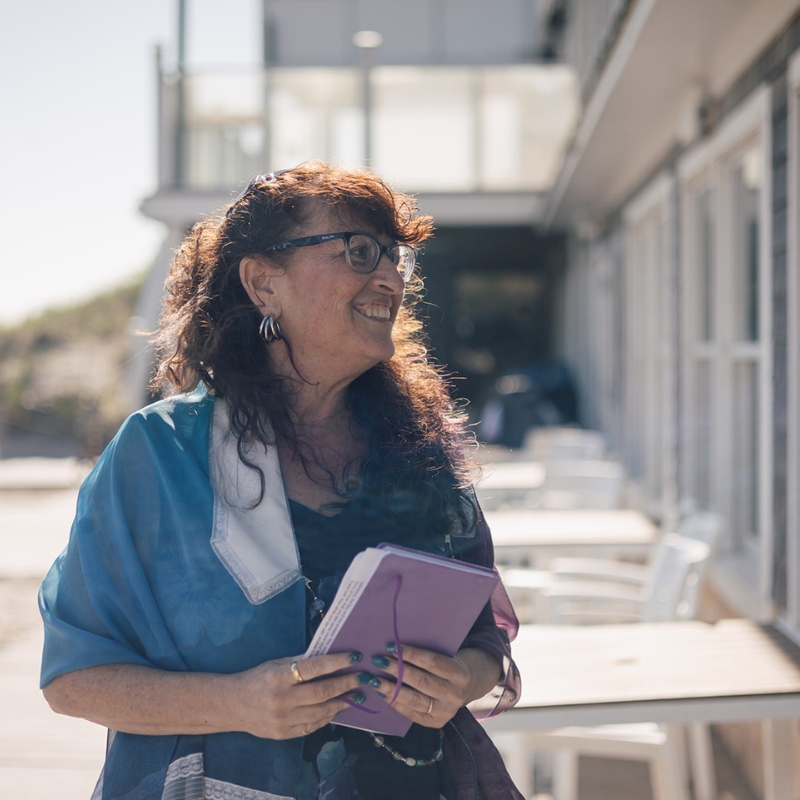Sixty years ago, several hundred unarmed protesters attempted to march across the Edmund Pettus Bridge in Selma, AL. Their goal was to walk the 54 miles to the state capitol in Montgomery and demand the implementation of voting rights previously denied to Black people across the Jim Crow South. Tear gas, billy clubs, and ferocious anger met the non-violent marchers. They faced a wall of white state troopers and sheriff’s deputies bent on stopping them, brutally attacking the front-line marchers. Children participating were chased back to their homes. Protest organizer Amelia Boynton was beaten unconscious. John Lewis had his skull cracked.
Images of the violence spread across the nation, creating a national outcry. More people came to Selma, including Rev. Dr. Martin Luther King, Jr., and dared to march across that bridge. Five months later, the 1965 Voting Rights Act was signed into law. Bloody Sunday was a nadir of the American story. The images from it are horrific and shocking: White police officers with billy clubs attacked Black marchers with seeming impunity. Marchers lay on the ground with bloodied bandages. Many of us want to turn away, to avoid looking at the brutality, and to remember only the victory that came after.
We do so at our peril.
Find more commentaries on Pekudei.
This week, we read the very last lines of the Book of Exodus. The work of building the Tabernacle, the tent of meeting, and the Ark of the Covenant had been completed. The only thing left to do was to put it all together. Moses followed the instructions, putting all the sockets in place and all the curtains together. Then, “he took the eydut (testimony/witness/pact) and placed it in the ark; he fixed the poles to the ark, put the cover on top of it, and brought the ark inside the Tabernacle.” (Exodus 40:20-21)
Years later, when King Solomon built the Temple in Jerusalem, the priests described the Ark as holding two tablets: sh’nei luchot haeydot. There is a linguistic problem here. The words for the Tablets (luchot haeydot) are already plural — why would we need to add the word “two” (sheni) to describe what is inside? The rabbis of the Talmud tell us that this strange construction refers to the fact that the Ark contained two sets of tablets: The second set, which Moses brought down from Mt. Sinai, is whole and intact. The first set, which he smashed upon seeing the Israelites worshipping the Golden Calf — broken and shattered stones — also resides in the Ark. (Babylonian Talmud, Bava Batra 14b)
The obvious question is, why? Why save the broken tablets that recall the greatest sin of the Israelites? Why hold on to a memory of their most significant failings?
Find more commentaries on racial justice.
James Baldwin instructs us, “Not everything that is faced can be changed, but nothing can be changed until it is faced.” We must remember the misdeeds of our past no matter how awful, no matter how egregious. This is the meaning of keeping the broken shards in the Ark of the Covenant. Only when we fully acknowledge our brokenness and carry the shards of our errors, can we begin to become whole and heal. Moses inherently understood this. By placing the broken shards of the Tablets in the Ark, he was telegraphing to the people that it is OK to carry our brokenness with us. In fact, it is necessary.
Dr. Henry Giroux, a critical pedagogy scholar, wrote, “Ignoring past atrocities, historical injustices and uncomfortable truths about a society’s foundation is not merely an oversight — it constitutes an active form of violence that shapes both our collective consciousness and political realities.” (“Erasing History, Erasing Democracy”) A hallmark practice of authoritarianism is the destruction of the historical record, the erasure of the past. Attempting to whitewash American history, the current administration issued executive orders mandating the elimination of curricula that promote “radical, anti-American ideologies,” and instead promote the deceitful idea that the United States always lived up to the founding principles of freedom and prosperity. We are witnessing the removal of archival websites from government servers and the cancellation of African American History Month observances. Through these efforts, the administration is tearing apart the historical narrative of the United States, denying the verifiable truth that more people have been left out of the American dream than included in it, that brutality had a role in building this country, and that we have inherited both the gloriousness of the nation’s founding ideas and the shame of our failure to live up to them. In short, they are discarding the broken shards.
This month, I traveled to Selma to participate in the 60th anniversary march across the Edmund Pettus Bridge. It was a joyful celebration. But the celebration is only meaningful if we remember what came before, if we remember the images of Amelia Boynton and John Lewis bloodied and on the ground. We can only hold on to the freedoms so dearly won by recognizing the jagged shards of history.
Elyse Wechterman (RRC, 2000) is the former CEO of the Reconstructionist Rabbinical Association and serves as a rabbinic coach and congregational consultant across movements. She is also a collage artist and lives in Abington, PA.

